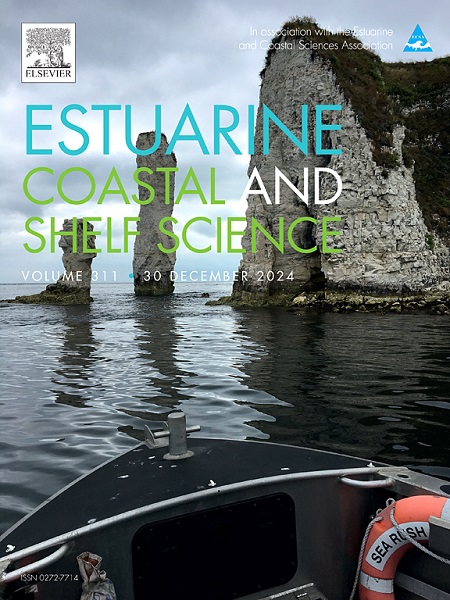Determining the fine-scale movement of an estuarine fish through a tidal-exclusion barrier improves the understanding of mass fish mortality risk
IF 2.6
3区 地球科学
Q1 MARINE & FRESHWATER BIOLOGY
引用次数: 0
Abstract
Tidal-exclusion barriers have routinely been constructed within estuaries throughout the world to moderate the risk of flooding by marine incursions. These barriers have been shown to impact ecological connectivity, however, their impact on the movement patterns of obligate estuarine fishes is poorly understood. We aimed to determine the environmental drivers of movements through a fish passage gate within a tidal exclusion barrier by the temperate sparid Black Bream (Acanthopagrus butcheri), which occasionally suffers from large-scale mortality events that predominantly occur in the adjacent habitat upstream of the barrier. Fish were fitted with passive integrated transponder (PIT) tags and their fine-scale passage was recorded using a monitoring system that acted as a gate at either end of the barrier over 14 months. Hydrological and environmental predictor variables were included in generalised additive mixed models to determine the drivers of upstream and downstream passages through the gate on an hourly and daily basis. Successful upstream and downstream passages were associated with times of minimal flow velocity within the fish gate that occurred when water levels equalised on both sides of the barrier. Downstream passages were also associated with declines in dissolved oxygen concentrations upstream of the barrier; suggesting that fish were seeking to escape poor water quality. However, as passage opportunities to avoid unfavourable conditions were influenced by tides that equalised the water levels, periodic mass fish mortality events can occur upstream of the barrier. As climate change will increase saltwater incursion and storm-related flooding risks, there will be a greater need for tidal exclusion barriers in many regions. This study underscores the need to understand the movement patterns of fishes in estuaries to maintain the connectivity of populations.

求助全文
约1分钟内获得全文
求助全文
来源期刊
CiteScore
5.60
自引率
7.10%
发文量
374
审稿时长
9 months
期刊介绍:
Estuarine, Coastal and Shelf Science is an international multidisciplinary journal devoted to the analysis of saline water phenomena ranging from the outer edge of the continental shelf to the upper limits of the tidal zone. The journal provides a unique forum, unifying the multidisciplinary approaches to the study of the oceanography of estuaries, coastal zones, and continental shelf seas. It features original research papers, review papers and short communications treating such disciplines as zoology, botany, geology, sedimentology, physical oceanography.

 求助内容:
求助内容: 应助结果提醒方式:
应助结果提醒方式:


